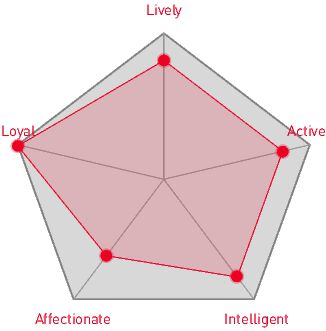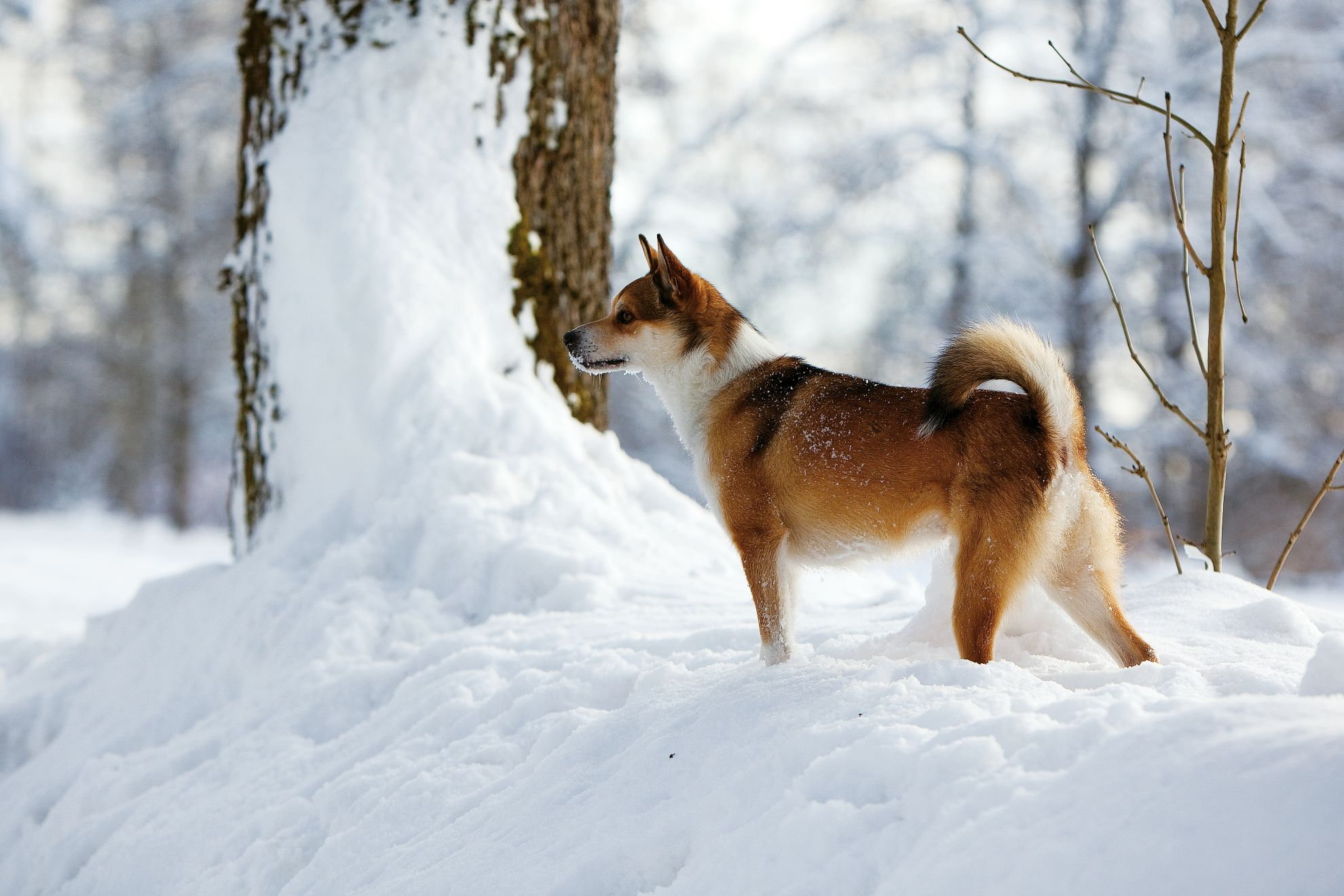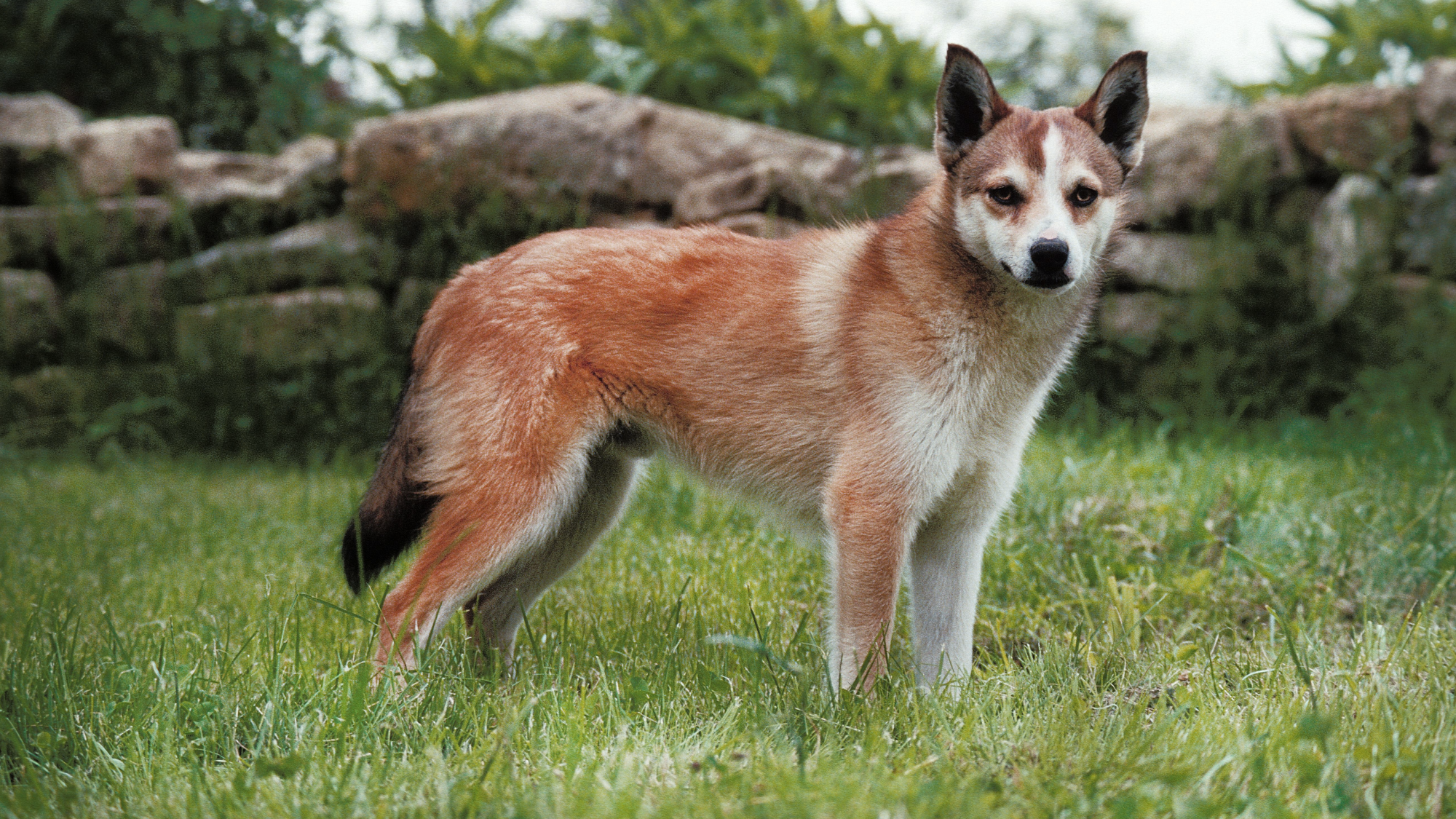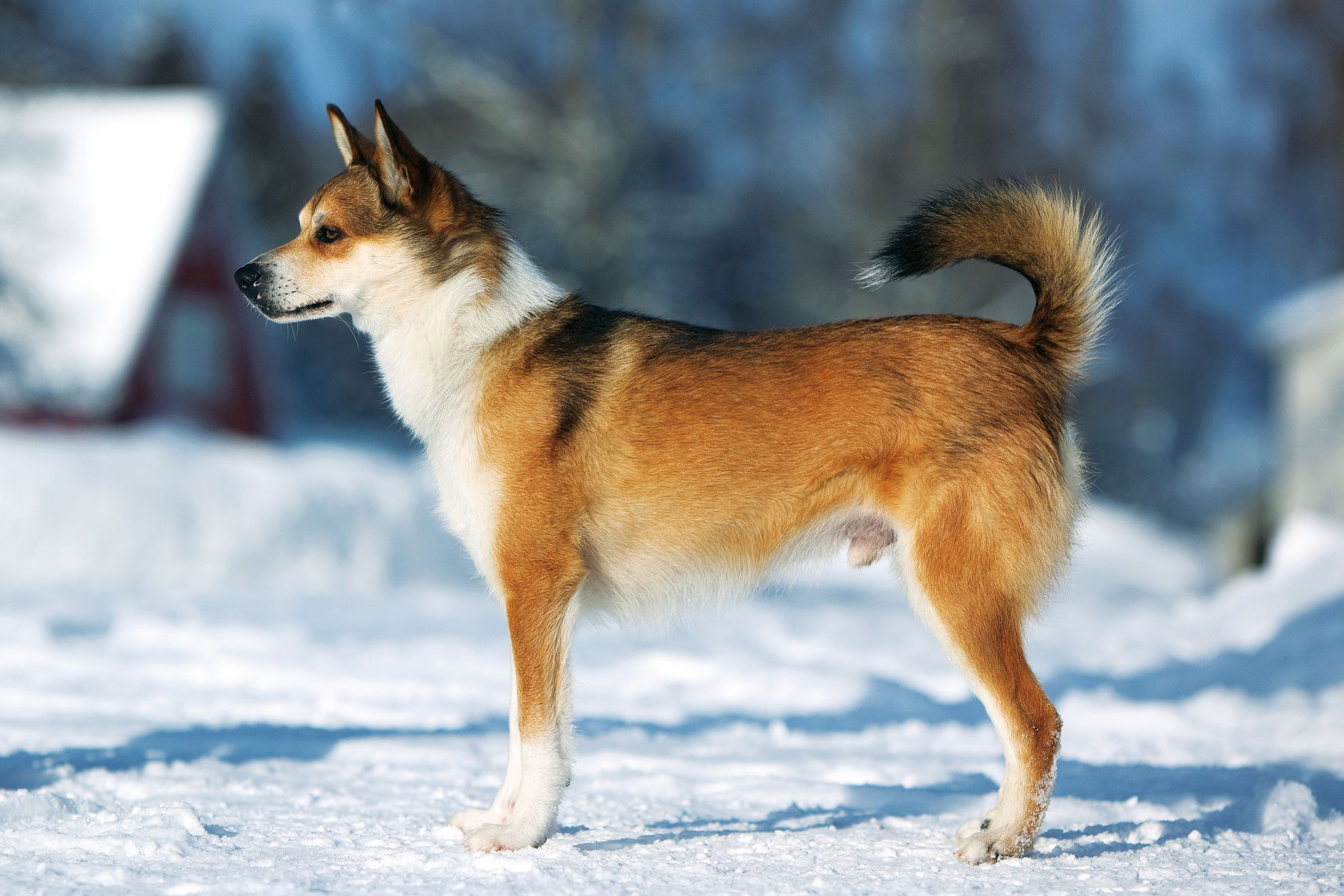

A healthy start to life
Puppyhood is a time of massive physical and behavioural change, and a steep learning curve for new owners. Find out how you can provide your puppy with the best start to life so they develop into strong, healthy dogs.
Learn more
Lifetime of health
Get advice and information on how to provide the best care for your dog at every stage of life.
Learn moreLet's talk Norwegian Lundehunds
Although Norwegian Lundehunds sport classic spitz-type breed features – pointed ears, wedge-shaped head and a curved, fluffy tail – you might ask yourself why the American Kennel Club characterises this breed as “rare and unique.” Originally developed to catch birds in their native land, Norwegian Lundehunds were especially suited to the job due to certain less-than-ordinary physical characteristics—additional toes, a flexible neck, and “adjustable” ears. Despite these physical quirks, or because of them, the Norwegian Lundehund is a magnificent canine that enjoys nothing more than long walks followed by long snuggles.Official name: Norwegian Lundehund
Other names: Norsk Lundehund
Origins: Norway

| Drooling tendencies |
|
Warm weather? | |
| Shedding level | Suited to apartment living? |  |
|
| Energy level (high, low, medium)*: | moderate | Family pet? |
 |
| Compatibility with other pets |  |
Can stay alone?* | 
|
*We advise against leaving pets alone for long stretches.
Companionship can prevent emotional distress and destructive behaviour. Speak to your veterinarian for recommendations.
Every pet is different, even within a breed; this snapshot of this breed’s specifics should be taken as an indication.
For a happy, healthy and well-behaved pet, we recommend educating and socialising your pet as well as covering their basic welfare, social and behavioural needs.
Pets should never be left unsupervised with a child.
Contact your breeder or veterinarian for further advice.


| Baby age: | Birth to 2 months |
| Puppy age: | 2 to 10 months |
| Adult age: | 10 months to 8 years |
| Mature age: | 8 to 12 years |
| Senior age: | From 12 years |

1/7
Get to know the Norwegian Lundehund
All you need to know about the breedIf Norwegian Lundehunds could hypothetically land a human job, they would surely be successful acrobats. Historically, Norwegian Lundehunds used their gifted flexibility, including forelegs that turn outward at a 90-degree angle, bendable shoulders allowing their front legs to extend flat to the sides, and pointed ears that can fold both forward and backward, to squeeze their way into narrow caves and tunnels across Norway’s coastline. These peculiar traits allowed Norwegian Lundehund dogs to thrive at one specific task: Catching puffin birds in their deeply hidden nests. As such, the Norwegian Lundehund were thereafter named after these birds (“lunde” means puffin and “hund '' means dog).
Nowadays, Norwegian Lundehunds are no longer celebrated for their hunting abilities, but instead for their fun-loving, gregarious, and curious nature. The Norwegian Lundehund breed’s playful energy means they often get along well with children, once trained. Not surprisingly, this breed tends to be very athletic and agile, so at least one long walk or hike is needed daily. Despite their long-standing background as working dogs, you never have to worry about them running away; their loyalty towards their human family is one of their best qualities and you’ll find that they will very quickly become your figurative shadow.

2/7
2 facts about Norwegian Lundehunds
1. Six-toed pup
The Norwegian Lundehund is categorised as a ‘polydactyl’ dog. No, this is not something you would find living in Jurassic Park, but rather the name given to a creature with additional physical features, such as the Norwegian Lundehund having six toes per paw (rather than five). Similar to a human thumb, the sixth toe was once very useful for traversing dangerous terrain in the mountain, allowing for a better grip on rocks. Other polydactyl dogs include The Great Pyrenees, as well as some Akitas and Australian Shepherds.
2. Maintaining airplane safety
Although the Norwegian Lundehund breed’s purpose is no longer focused around their working abilities, Tromsø Airport in Norway recently used this breed to help regulate the high number of seagull eggs in the surrounding areas. Why? The rising number of birds scattered across the aeroplane tarmac became problematic due to an increasing risk of aeroplane bird strikes. Once the Norwegian Lundehund dog locates the seagull eggs, they are then relocated to both a safer and more appropriate living area in nature, outside of the confines of the airport.
History of the breed
Originally hailing from the Arctic Islands of Lofoten in Norway, it is believed that Norwegian Lundehunds date as far back as the Ice Age. They were considered to have once been esteemed Vikings members, utilised for their ability to catch local puffins for their high-value meat and features. Although it is impossible to prove the start of their exact breeding date, the first mention of the Norwegian Lundehund breed was observed in literature published by Provost Erik Hansen Schonnebol in the 16th century.
From the 20th century, the Norwegian Lundehund’s skills were replaced by new commercial trapping methods, and their numbers dipped worryingly low when a dog tax was enacted in Norway to incentivise farmers to modernise.
To make matters considerably worse, Norwegian Lundehunds fell victim to an outbreak of a disease called canine distemper (a virus that attacks the respiratory, gastrointestinal and nervous systems of dogs), making them, at one point, on the verge of extinction.
Thankfully, an English Setter breeder named Eleanor Christie learned of the sparsely populated Norwegian Lundehund dogs and proactively developed a breeding program to save the breed. Although they are still considered incredibly rare, especially outside of their native Norway, the Norwegian Lundehund’s population numbers have slowly been increasing. The Norwegian Lundehund was officially recognised by the American Kennel Club in 2008.

4/7
From head to tail
Physical characteristics of Norwegian Lundehunds
1. Head
Small, wedge-shaped head, with triangular, pointed ears.
2. Body
Well-muscled, deep chest with lean legs and curled tail.
3. Coat
Thick and hard overcoat with soft and dense undercoat (tan to reddish-brown colouring).

5/7
Things to look out for
From specific breed traits to a general health overview, here are some interesting facts about your Norwegian Lundehund

6/7
Caring for your Norwegian Lundehund
Grooming, training and exercise tips
Norwegian Lundehunds have a fabulously thick undercoat, which does go through an intense shedding period twice a year. Beyond their bi-annual seasonal sheddings, they will continue to shed small amounts each day—so make sure to keep that lint roller close by! Aside from their coat, their nails should be trimmed, ears checked and teeth brushed daily for optimal health. Given their sporty and outdoorsy background, Norwegian Lundehund dogs need to exhaust their physical batteries through at least one lengthy walk, run, or hike—but all outdoor activities are welcomed. If they are kept indoors for too long, a bored Norwegian Lundehund might channel their acrobatic skills towards committing mischievous acts around the house (think climbing atop shelves or pantries). When it comes to training, Norwegian Lundehunds are quick-witted problem-solvers, but they can also be strong-minded, so be sure to keep training fun, consistent, and not too repetitive. Also note that Norwegian Lundehunds are especially sensitive, so using positive reinforcement and high-value rewards will help keep them motivated (just make sure any food rewards come out of your dog’s daily rations to avoid them putting on excess weight).7/7
All about Norwegian Lundehunds
Although the Norwegian Lundehund might act wary or even shy around strangers, their reserved disposition rarely translates into any form of aggressive behaviour. In fact, barking is probably the farthest they would go if ever caught off guard. Norwegian Lundehunds adapt well to new environments and will willingly open up to newcomers in no time.
Yes, the Norwegian Lundehund breed gets on especially well with other dogs; in fact, they are most content when living in a household with other fellow canines that they can run around and bond with. They also accept other animals decently well, such as cats or rodents, if socialised early with them. The only exception? Birds, which is very understandable given their background.
translations.feature.breeds.otherbreeds
Read more on this topic

How your dog's nutrition needs change with age

How to adopt a dog

Things to consider before getting a dog
Sources
1 - Veterinary Centers of America https://vcahospitals.com/
2 - Royal Canin Dog Encyclopaedia. Ed 2010 and 2020
3 - Banfield Pet Hospital https://www.banfield.com/
4 - Royal Canin BHN Product Book
5 - American Kennel Club https://www.akc.org/


